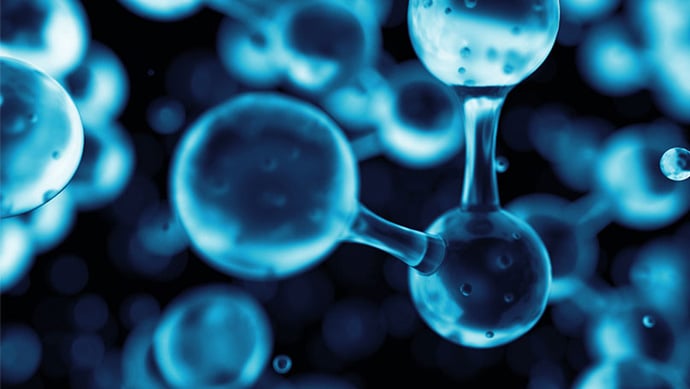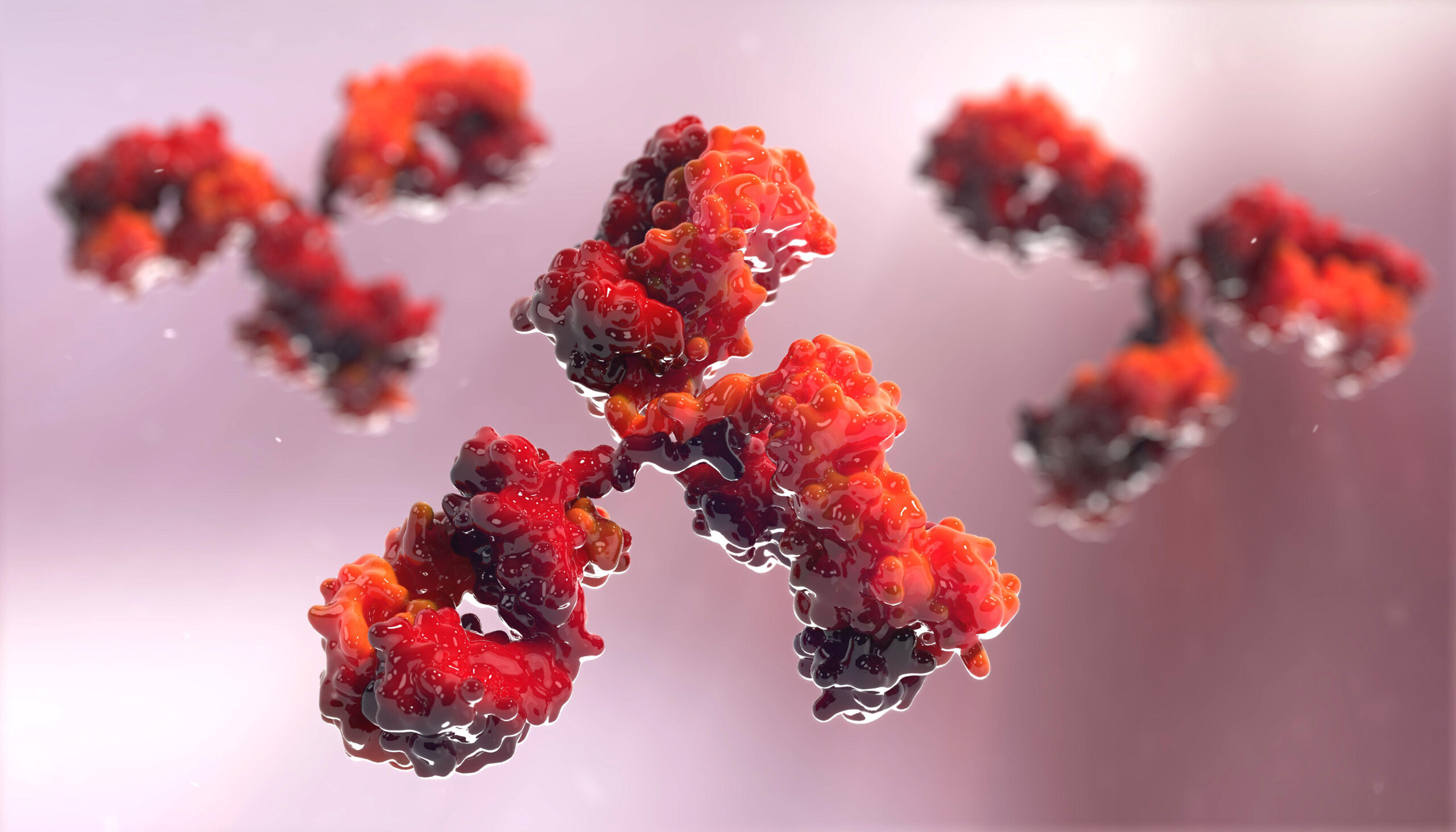Overcoming the Hurdles: Navigating the Challenges of Bioconjugate Development

Bioconjugate development is a rapidly advancing field that holds immense potential for the development of novel therapeutics. By combining different entities, such as peptides, antibodies, or small molecules, through chemical conjugation, bioconjugates offer the opportunity to target specific disease sites with increased precision and efficacy. However, the development of bioconjugates is not without its challenges.
Understanding the Challenges of Bioconjugate Development
Developing bioconjugates requires a deep understanding of the complexities involved in combining different molecular entities. One of the major challenges is ensuring the stability of the conjugate. The chemical conjugation process can introduce structural changes that may affect the stability and functionality of the components. It is essential to carefully select the appropriate conjugation chemistry and optimize reaction conditions to minimize these effects.
Another challenge is achieving the desired specificity and targeting efficiency. Bioconjugates are designed to selectively bind to specific targets, such as cancer cells or disease markers. However, achieving high target specificity while minimizing off-target interactions can be a difficult balancing act. Researchers need to carefully consider factors such as the choice of targeting moiety, linker design, and conjugation site to optimize the binding affinity and selectivity of the bioconjugate.
Furthermore, bioconjugate development often involves complex formulation and purification processes. Purification methods must be developed to remove any impurities or unconjugated components that may affect the safety and efficacy of the final product.
The Role of ADC Development in Bioconjugate Development
Antibody-drug conjugates (ADCs) are a prominent class of bioconjugates that have gained considerable attention in recent years. ADCs combine the specificity of monoclonal antibodies with the cytotoxic potency of small molecule drugs, offering a targeted approach for cancer therapy. The development of ADCs presents its own unique set of challenges.
One of the key challenges in ADC development is achieving the optimal drug-antibody ratio (DAR). The DAR determines the number of drug molecules attached to each antibody molecule and can significantly impact the therapeutic efficacy and safety profile of the ADC. Achieving a homogeneous DAR distribution with consistent potency across batches is critical for the success of ADC development.
Another challenge lies in the selection of the appropriate linker technology. The linker plays a crucial role in controlling the release of the cytotoxic payload from the antibody, ensuring its stability during circulation and effective release at the target site. The stability and release kinetics of the linker-drug conjugate must be carefully optimized to achieve the desired efficacy and minimize off-target toxicity.
Furthermore, the development of ADCs requires extensive characterization and analytical methods to evaluate the quality and performance of the bioconjugate. Robust analytical techniques, such as mass spectrometry, chromatography, and bioassays, are essential for assessing the critical quality attributes of the ADC, including drug loading, purity, stability, and immunogenicity.
Overcoming Challenges in ADC Development
To overcome the challenges in ADC development, a multidisciplinary approach is essential. Collaboration between experts in medicinal chemistry, bioconjugation, and pharmacologyis crucial to address each aspect of ADC development comprehensively.
One strategy for overcoming challenges is the utilization of site-specific conjugation technologies. These technologies enable the precise attachment of the drug payload to specific amino acid residues in the antibody, ensuring a defined DAR and reducing the heterogeneity often associated with random conjugation methods. Site-specific conjugation can improve the consistency, safety, and efficacy of ADCs.
Another approach is the development of novel linker technologies. Linkers with enhanced stability and controlled release properties can improve the therapeutic window of ADCs by reducing off-target toxicity and improving payload delivery to the tumor site. By fine-tuning the linker design, researchers can optimize the release kinetics and improve the overall efficacy of the ADC.
Additionally, advancements in analytical techniques have played a crucial role in overcoming challenges in ADC development. High-resolution mass spectrometry allows for the characterization of ADCs with unprecedented accuracy, providing detailed information about the drug loading, DAR distribution, and stability. These analytical methods enable researchers to make informed decisions throughout the development process and ensure the consistency and quality of the final product.
Peptide Delivery in Bioconjugate Development
Peptides are another class of molecules commonly used in bioconjugate development. Peptide-based bioconjugates have shown promise in various applications, including targeted drug delivery, imaging, and diagnostics. However, the delivery of peptides to their intended site of action presents its own set of challenges.
One of the main challenges in peptide delivery is overcoming the enzymatic degradation in the gastrointestinal tract. Peptides are susceptible to degradation by proteases, limiting their oral bioavailability. To overcome this challenge, various strategies have been employed, such as the use of prodrugs, nanoparticle-based delivery systems, or oral peptide mimetics that can bypass enzymatic degradation.
Another challenge is achieving efficient cellular uptake and intracellular delivery of peptide-based bioconjugates. Peptides, due to their small size and hydrophilicity, often face barriers in crossing cell membranes and reaching their intracellular targets. To enhance cellular uptake, various strategies, including the use of cell-penetrating peptides, nanocarriers, or receptor-mediated endocytosis, have been explored.
Furthermore, the stability and pharmacokinetics of peptide-based bioconjugates must be carefully considered. Peptides can be susceptible to degradation by proteases or rapid clearance from the body, limiting their therapeutic efficacy. Strategies such as the incorporation of non-natural amino acids or PEGylation can improve the stability and prolong the circulation time of peptide-based bioconjugates.
ADC Design Considerations in Bioconjugate Development
Designing an effective ADC requires careful consideration of various factors, including the choice of antibody, selection of the cytotoxic payload, and optimization of the linker chemistry. Each component plays a critical role in determining the overall efficacy and safety of the ADC.
The choice of antibody is crucial for achieving the desired target specificity and binding affinity. Monoclonal antibodies with high affinity and selectivity towards the target antigen are preferred. Extensive characterization and validation of the antibody, including epitope mapping and binding kinetics, are necessary to ensure its suitability for ADC development.
The selection of the cytotoxic payload is equally important. The payload should possess potent anticancer activity, be stable during circulation, and exhibit effective release at the target site. Various classes of cytotoxic agents, such as maytansinoids, auristatins, or calicheamicins, have been employed in ADC development, each with its own mechanism of action and therapeutic potential.
The linker chemistry plays a critical role in controlling the release of the cytotoxic payload. The linker must be stable during circulation, ensuring minimal release of the payload in non-target tissues. However, it should also be capable of efficient release at the target site, either through enzymatic cleavage or intracellular reduction. The choice of linker technology and optimization of its release kinetics are essential for achieving the desired therapeutic window.
Key Challenges in ADC Design and Solutions
Despite the tremendous potential of ADCs, several challenges persist in their design and development. One of the key challenges is achieving the optimal balance between efficacy and safety. ADCs must deliver a sufficient amount of the cytotoxic payload to the target site while minimizing off-target toxicity. This requires careful optimization of the drug-antibody ratio, linker stability, and payload release kinetics.
Another challenge lies in the heterogeneity often associated with ADCs. Due to the stochastic nature of the conjugation process, ADCs can exhibit a range of drug loading levels, leading to batch-to-batch variability and potential efficacy issues. To address this challenge, site-specific conjugation technologies have been developed, enabling the precise attachment of the payload to specific amino acid residues in the antibody and reducing the heterogeneity.
Furthermore, the development of robust analytical methods for characterizing ADCs is crucial. Accurate assessment of critical quality attributes, such as drug loading, DAR distribution, purity, and stability, is essential for ensuring the consistency and quality of ADCs. High-resolution mass spectrometry, chromatography, and bioassays are among the analytical techniques employed for in-depth characterization and quality control.
Case Studies
- Trastuzumab Emtansine (T-DM1)
- Trastuzumab Emtansine, or T-DM1, offers a compelling case in antibody-drug conjugate (ADC) development. Facing the challenge of achieving an optimal drug-antibody ratio (DAR), T-DM1 employed site-specific conjugation and a stable thioether linker. This strategy resulted in a consistent DAR of approximately 3.5, reducing heterogeneity and ensuring efficient drug release at the tumor site. T-DM1's success led to improved therapeutic outcomes in HER2-positive breast cancer patients, setting a high standard in ADC development.
- Gemtuzumab Ozogamicin (Mylotarg)
- Gemtuzumab ozogamicin, marketed as Mylotarg, demonstrates the potential of ADCs in treating acute myeloid leukemia (AML). Confronting immunogenicity concerns due to the combination of a monoclonal antibody and a potent cytotoxic payload, Mylotarg optimized the antibody component and selected a stable linker technology. This strategic approach reduced immunogenicity and enhanced safety, resulting in FDA approval for AML treatment and expanded indications for hematological malignancies.
- Peptide-Based Targeted Delivery:
- Pharmaceutical giants like Novartis and Ipsen have utilized peptide-based bioconjugates, including Octreotide and Lanreotide, in the field of biologics for targeted drug delivery and diagnostics in neuroendocrine tumor therapy. These peptides initially faced challenges such as enzymatic degradation and limited cellular uptake due to their small size. However, through innovative approaches involving the incorporation of non-natural amino acids and the use of strategies like nanoparticle-based delivery systems and receptor-mediated endocytosis, Novartis and Ipsen have significantly enhanced stability, extended circulation time, and improved therapeutic efficacy and imaging capabilities for patients. These examples highlight the pivotal role of peptides in advancing bioconjugate development within the Biologics industry, offering more effective treatments across various diseases.
Bioconjugate Development Services and Solutions
Given the complexity and challenges associated with bioconjugate development in biologics, several companies and research institutions offer specialized services and solutions to support the development of bioconjugates. These organizations provide expertise in various areas, including conjugation chemistry, characterization and analytics, formulation development, and regulatory support. One of the key services offered is conjugation chemistry optimization. These organizations employ a wide range of conjugation chemistries and technologies, enabling the development of bioconjugates with improved stability and functionality in biologics. They have the expertise to select the most suitable conjugation method and optimize reaction conditions to minimize the impact on the components' stability and activity. Additionally, these organizations offer formulation development services to optimize the stability, solubility, and pharmacokinetics of bioconjugates in the biologics field. They have the expertise to develop suitable formulations and excipients to ensure the long-term stability and effective delivery of the bioconjugate to the target site. Furthermore, bioconjugate development services encompass extensive analytical characterization and quality control, particularly in the context of biologics. These organizations employ state-of-the-art analytical techniques, such as mass spectrometry, chromatography, and bioassays, to assess critical quality attributes and ensure the consistency and quality of the bioconjugate throughout the development process within the biologics industry.
Conclusion
Overcoming these hurdles requires a comprehensive understanding of the complexities involved in combining different molecular entities and a multidisciplinary approach that brings together experts from various fields.
Advancements in conjugation chemistry, linker technologies, and analytical techniques have significantly contributed to overcoming the challenges in bioconjugate development. The development of site-specific conjugation methods and novel linker technologies has improved the consistency, safety, and efficacy of bioconjugates, particularly ADCs and peptide-based bioconjugates.
Furthermore, the availability of specialized services and solutions offered by companies and research institutions has facilitated the development of bioconjugates by providing expertise in conjugation chemistry and analytical characterization.
As the field of bioconjugate development continues to advance, overcoming the challenges will pave the way for the development of novel and targeted therapeutics with the potential to revolutionize the treatment of various diseases.
Explore the latest in biologics at upcoming events! Don't miss out on ground-breaking insights and networking opportunities. Stay in the loop by subscribing to our newsletter for exclusive updates on biologics events







